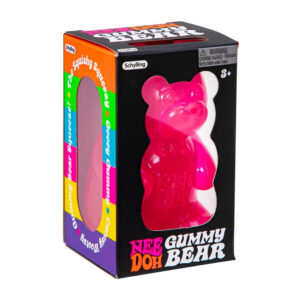
Gummy Bear Sensory Fidget Toy by NeeDoh
The Schylling NeeDoh Gummy Bear is a tactile sensory fidget toy designed to provide stress relief and promote focus. Shaped like a classic gummy bear.
Fidget toys are small objects designed to be manipulated by hand: squeezing, spinning, pushing buttons, popping bubbles, twisting parts, etc. They offer tactile (touch) and sometimes visual or auditory feedback, and this repetition or sensory stimulation helps regulate sensory input. Common examples include stress balls, putty or slime, fidget cubes, pop-its, spinners, tangle toys, and squishies.
Choosing the right fidget toy depends on the person’s needs and preferences. Some people prefer something soft and squeezable, like a stress ball or putty, while others feel calmer with toys that click, spin, or pop. It’s also important to think about where the toy will be used—quiet, discreet fidgets are better for classrooms or meetings, while brighter or noisier options might work well at home.3
Ultimately, the “perfect” fidget is the one that feels satisfying and helps the person stay calm, focused, or regulated without being distracting. So, let me show you some ideas!
For many people—especially those with ADHD, autism, or sensory processing differences—fidget toys help regulate sensory input and make overwhelming situations more manageable.
The repetitive motions and textures can create a calming effect, easing anxiety and stress. At the same time, keeping the hands busy often makes it easier to focus on tasks like listening, working, or learning. They can also help with fine motor skills by strengthening hand muscles and coordination, while giving an outlet for strong emotions or restlessness.
Fidget toys come in many forms, each offering a different kind of sensory experience. Each type appeals to different preferences, so the best choice depends on whether someone is looking for quiet focus, stress relief, or simply something fun to keep their hands busy. Here are the main types of fidget toys.
Soft, squeezable balls are one of the most classic fidget tools. They are designed to be squeezed repeatedly, which can release tension, calm nerves, and strengthen hand muscles. Stress balls are especially useful for quiet settings since they don’t make noise and can easily fit in a pocket or backpack.
Putty, slime, or similar moldable materials also offer a stretchy, squishy experience. They can be pulled, twisted, rolled, or shaped in endless ways, which makes them a great outlet for stress and creativity. Many people find the texture soothing, though they can be messy if not stored properly. Lastly, soft foam toys and squishies shaped like animals, food, or other fun objects. When squeezed, they slowly rise back to their original shape, offering both a visual and tactile calming effect.

The Schylling NeeDoh Gummy Bear is a tactile sensory fidget toy designed to provide stress relief and promote focus. Shaped like a classic gummy bear.
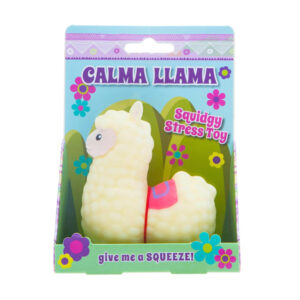
The Calma Llama stress toy is a playful silicone fidget companion shaped like a charming little llama. Feels tactilely engaging without being stiff.
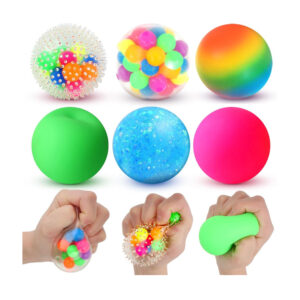
The 6-Piece Water Bead Stress Relief Squeezing Ball Set is designed to provide a calming, tactile experience for kids and adults alike.
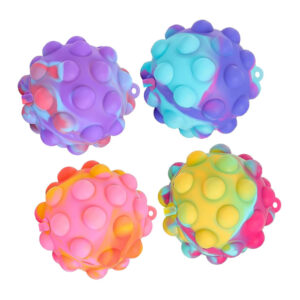
This colorful collection of sensory poppers blends hands-on play with soothing tactile feedback, making it ideal for stress relief.
Pop-its have rows of soft silicone bubbles that can be pressed back and forth, creating a satisfying popping sensation. They provide repetitive, rhythmic input that can be calming and help with focus. Bubble toys are usually quiet enough for most environments and come in a variety of shapes and colors. Lately, some new lines of pop-it toys have also included lights, built-in games, and sound.
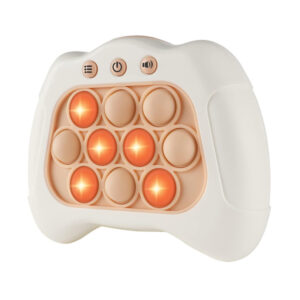
Pop The Target! is a handheld speed-pushing game machine designed for solo play or head-to-head competition. Compact and lightweight.
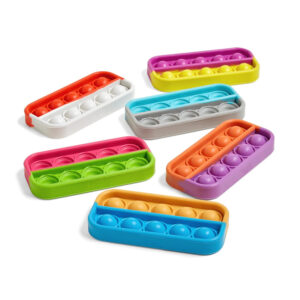
Designed to support foundational math skills, these tactile poppers help children visualize counting, addition, subtraction, and number patterns.
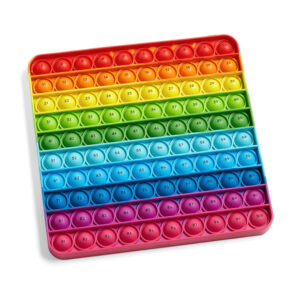
This innovative educational tool combines the classic hundred chart with the satisfying “pop” of a sensory bubble toy, making it ideal for young learners.
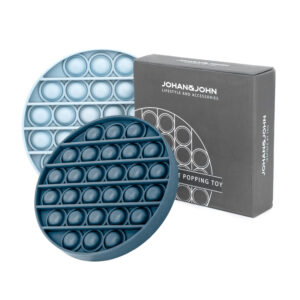
Crafted from durable, food-grade silicone, these toys are designed to withstand repeated use, making them ideal for both kids and adults.
These toys spin smoothly between the fingers, offering continuous motion. The repetitive spinning can be soothing and helps some people release restless energy.
Spinners are small and portable, but in some environments they may be distracting if overused. Just like with the rest of the fidget toys mentioned here, new models are being invented every day, with features like silent spinning, transformable shapes, and light effects.
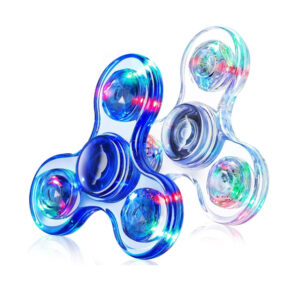
This vibrant 2-pack of LED light-up fidget spinners is designed to captivate and soothe users of all ages. Each spinner has multiple flashing modes.
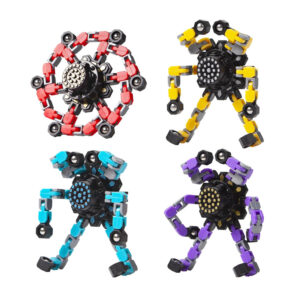
The Gokeey Transformable Fidget Spinners set includes four vibrant fingertip gyros designed to provide stress relief and sensory stimulation.
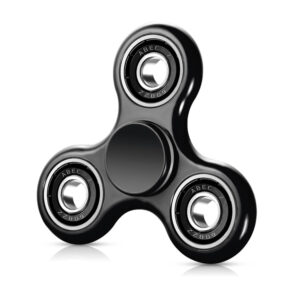
Crafted from high-quality ABS plastic, it features a durable steel bearing that ensures smooth, quiet spins lasting between 60 to 90 seconds.
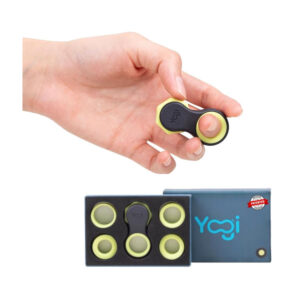
The Yogi Fidget Toy is a premium, silent sensory spinner designed to provide discreet stress relief and enhance focus for both adults and children.
A cube-shaped toy with different activities on each side, such as buttons, switches, dials, and rollers. Fidget cubes are great for variety, since they allow different kinds of movements in one toy. They can be helpful for people who like to change up their fidgeting rather than repeat the same motion.
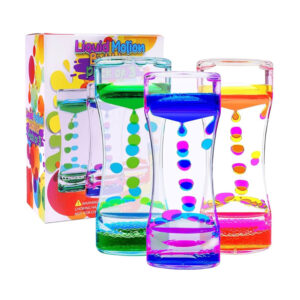
The YoYa Toys Liquimo Liquid Motion Bubbler is a set of three mesmerizing sensory toys designed to provide relaxation, focus, and entertainment.
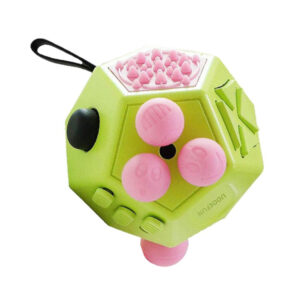
The 12-Sided Fidget Cube Toy is a versatile sensory tool designed to help children and adults manage stress, anxiety, and improve focus.
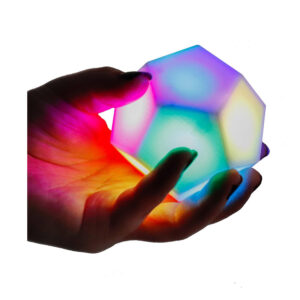
This innovative toy features vibrant light displays, tactile feedback, and engaging sounds, making it an excellent tool for stress relief.
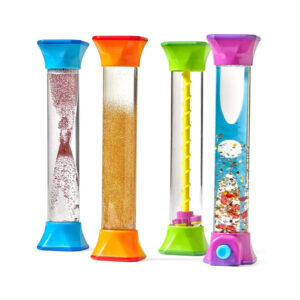
These transparent, liquid-filled tubes create mesmerizing visual effects as the contents gently flow, swirl, or shift, and encouraging relaxation.
Made of interconnected pieces that twist and turn, tangle toys encourage continuous movement. They’re especially useful for keeping hands busy during reading, listening, or thinking. Their smooth texture and flowing motion can also feel calming.
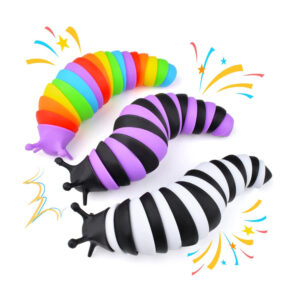
The Cevioce Fidget Slug Toy is a sensory toy designed for both kids and adults. This set includes three individual slug toys.
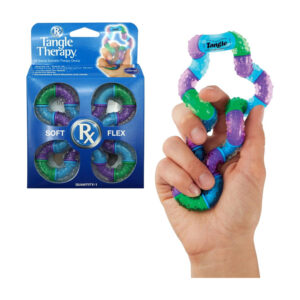
This twistable, ergonomic fidget toy is designed to provide a calming and stress-relieving sensory experience. It has 20 interconnected pieces.
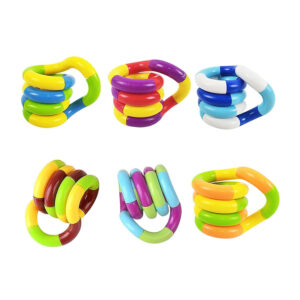
The Fidget Twist Toys Pack is a set of six multicolored sensory toys designed to provide hours of stress relief, focus enhancement, and tactile stimulation.
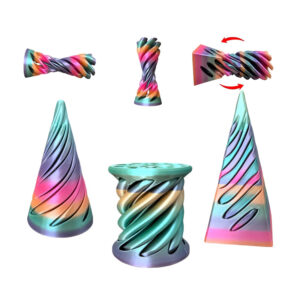
The ajitxalr Impossible Cone Spiral Cone Fidget Toy is a visually captivating and interactive stress-relief tool designed to engage both the mind and hands.
Strings, bands, and activity boards are versatile sensory toys that help with focus, stress relief, and fine motor development. Strings and bands allow users to pull, twist, and weave, offering calming tactile input and improving hand-eye coordination.
Activity boards combine buttons, zippers, gears, and textured surfaces to engage multiple senses, boost cognitive skills, and support sensory processing. These toys are ideal for children and adults with ADHD, autism, or anxiety and can be used at home, in classrooms, or on the go.
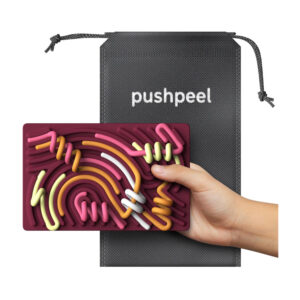
This sensory activity board is a versatile and engaging silicone fidget toy designed to provide calming sensory input for children and adults.
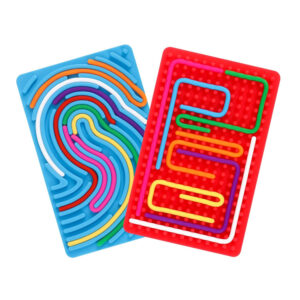
This board is made of soft, flexible silicone and features a unique double-sided design, with each side perforated to allow threading and weaving.
Fidget toys come in many shapes, sizes, and textures, but they all serve the same purpose—helping people manage stress, stay focused, and regulate their energy in a safe and satisfying way. The best toy depends on individual needs, whether someone prefers something quiet and discreet, or fun and sensory-rich. With so many options available, there’s a perfect fidget for everyone, making these simple tools both practical and enjoyable supports for everyday life.